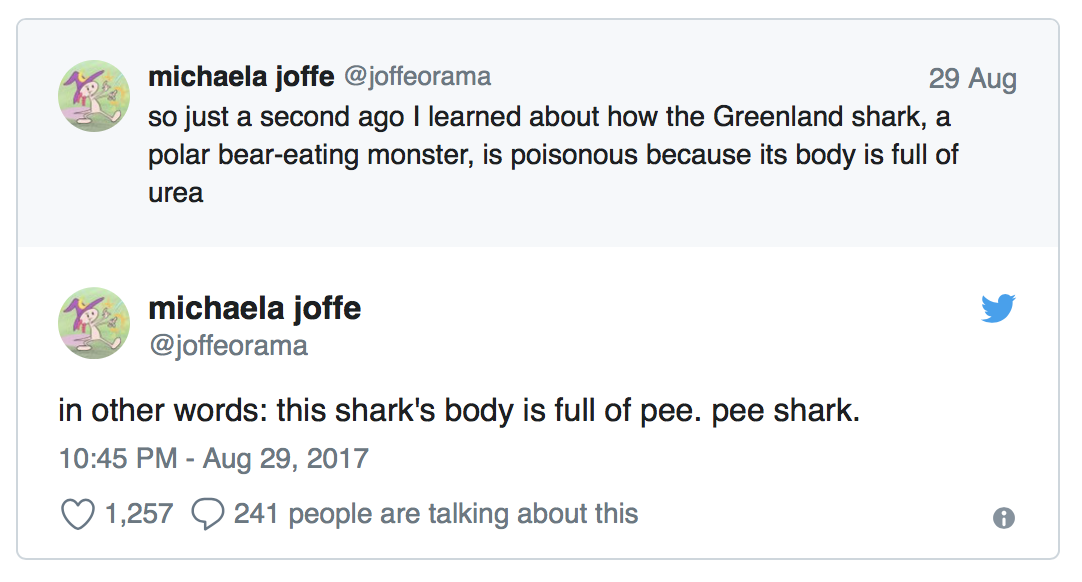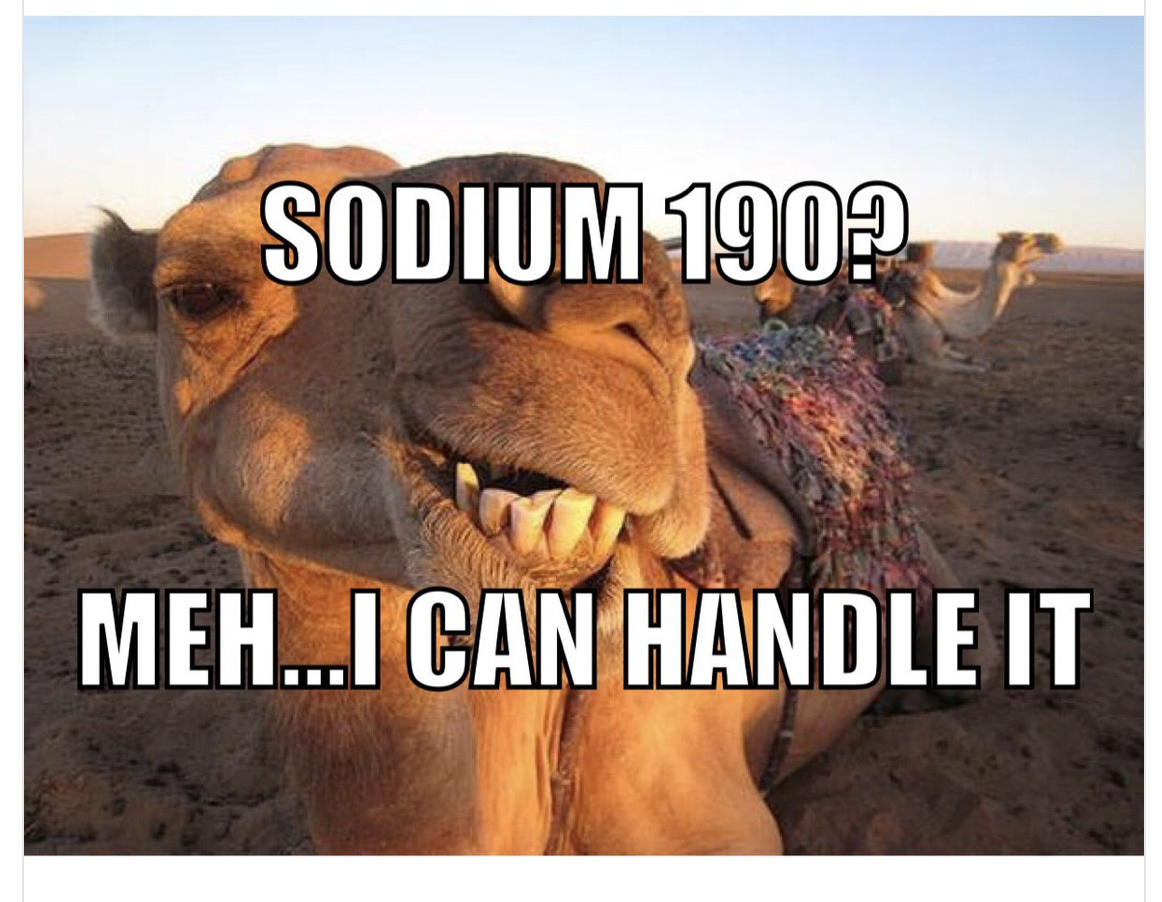#NephMadness Choosing Wisely Campaign (#NCWC) – Animal House Region (#AnimalRegion)
As the submission deadline for picks for #NephMadness 2018 approaches, many of us are wondering how the Blue Ribbon Panel will make its decisions on which teams should advance to the next round. Here we take a look at the Animal House Region (#AnimalRegion) to see who looks like an under-dog and who may come out top dog (animal puns are an added benefit of this region!)The Battle of Osmolality Regulation: Pee Shark versus Salt-Switching Salmon It’s tough to get a read from selection committee member Dr. Mark Zeidel and Dr. Timothy Yau's (@Maximal_Change) great scouting report of this region. This opening battle serving as a clash of the competing osmololar balance mechanisms. Based on popular opinion alone, the shark appears to be somewhat of a fan favorite, judging by the interest garnered by a tweet thread appears in August 2017 about the Greenland shark. While not entirely composed of urine, sharks maintain extremely high urea levels to act as “osmoregulatory ballasts” allowing these predators to maintain osmolality in the range of 1,000mOsm/kg with 30% composed of urea. In addition to their fascinating physiology, sharks also possess fine control of osmoregulation through their rectal glands, with Na/K/2Cl concentrations 50x that of the TAL in humans. Additionally, this discovery has allowed for advances in our understanding of the TAL and diuretic physiology – findings with direct and important consequences for humans. However, Team Salmon also puts together a convincing team, with a versatility not often matched in this year’s field. As a teleost fish, salmon adapt from freshwater to saltwater and back again to freshwater, a swing of environmental osmolality of 1,000 mOsm/kg without significant changes in serum osmolality. This is due to a combination of osmosensor mediated diffusion and upregulation of transporters in the gills, as well as specialized cells in the GI tract. If adaptability is the key to a team’s success, Salmon may be the sleeper in this region. Camel versus Toad: Water, water everywhere or nowhere?This matchup is the battle of adaption to environmental extremes, and it’s tough to get a read from the selection committee scouting report. This dipsogenic dromedary is the exception rather than the rule with regard to osmolality. Returning to the scouting report, Dr. Zeidel focuses on the physiology of this adaptive response:
However, Team Salmon also puts together a convincing team, with a versatility not often matched in this year’s field. As a teleost fish, salmon adapt from freshwater to saltwater and back again to freshwater, a swing of environmental osmolality of 1,000 mOsm/kg without significant changes in serum osmolality. This is due to a combination of osmosensor mediated diffusion and upregulation of transporters in the gills, as well as specialized cells in the GI tract. If adaptability is the key to a team’s success, Salmon may be the sleeper in this region. Camel versus Toad: Water, water everywhere or nowhere?This matchup is the battle of adaption to environmental extremes, and it’s tough to get a read from the selection committee scouting report. This dipsogenic dromedary is the exception rather than the rule with regard to osmolality. Returning to the scouting report, Dr. Zeidel focuses on the physiology of this adaptive response:
Despite these adaptive responses, as camels dehydrate over their 2 weeks without water, their Na rises from 154 to 191 mEq/L, with corresponding serum osmolality rising from 304 to 406 mOsm/kg. When given access to water, they re-hydrate rapidly; they lower their serum Na and osmolality to baseline levels within hours. And again, despite this massive shift, their mentation and neural function remains intact. Remarkably, these large swings in serum osmolality do not alter the camel’s neurological functioning.
Camels appear to be drawing strong support on Twitter, with memes in support of this team almost equaling that of Team Shark above. One weakness of the Camel team is the lack (so far at least!) of physiologic understanding of how camels tolerate such dramatic dehydration/rehydration – although some supporters of this team may argue that this makes the feet even more impressive! Team Toad’s argument is for the power of the amphibian’s bladder, with the ability to reabsorb water from the bladder as needed depending on evaporative skin losses. First discovered in the 1950s, this physiologically advanced animal (along with others) was responsible for the discovery of aquaporins and essential in our understanding of free water homeostasis. Findings of this advanced physiology in toads and frogs has had direct implications for our understanding of water handling in the human distal tubule. Additionally, the discovery of aquaporins was considered so fundamental that Peter Are won a Nobel Prize for this finding, further strenghting the importance of this team.Can we gather any information about how the Blue Ribbon Panel will vote? A search of their twitter activity doesn’t reveal any strong preferences, retweets or suggestions of animal preference – in fact all members of the Blue Ribbon Panel have been silent on this region. A quick review of PubMed offers a few clues into how the panelists may vote. Sarah Faubel (@Doc_Faubel), for example, is interested in animal models of AKI, suggesting that she may pick a team from this region to go deep in this year’s tournament. Additionally, Eleanor Lederer (@EleanorLederer) studies regulation of sodium phosphate transporter in proximal renal tubule cells, suggesting that she may be on Team Shark.So where does this leave us? Two Blue Ribbon Panel members with possible votes for teams in the Animal House Region to go deep into the tournament – however, it’s anybody’s game. Based on the strength of the physiology, popular opinion and memes, I’ll be taking Team Shark for a deep run into the tournament this year.Follow #NCWC for daily region updates.Read the full AJKD blog (and check out the full scouting report for the #AnimalRegion here). And check out Dr. Maryam Khosravi (@_dr_mk) article on the importance of the Animal House region on the AJKDblogSubmit your NephMadness brackets here.
Team Toad’s argument is for the power of the amphibian’s bladder, with the ability to reabsorb water from the bladder as needed depending on evaporative skin losses. First discovered in the 1950s, this physiologically advanced animal (along with others) was responsible for the discovery of aquaporins and essential in our understanding of free water homeostasis. Findings of this advanced physiology in toads and frogs has had direct implications for our understanding of water handling in the human distal tubule. Additionally, the discovery of aquaporins was considered so fundamental that Peter Are won a Nobel Prize for this finding, further strenghting the importance of this team.Can we gather any information about how the Blue Ribbon Panel will vote? A search of their twitter activity doesn’t reveal any strong preferences, retweets or suggestions of animal preference – in fact all members of the Blue Ribbon Panel have been silent on this region. A quick review of PubMed offers a few clues into how the panelists may vote. Sarah Faubel (@Doc_Faubel), for example, is interested in animal models of AKI, suggesting that she may pick a team from this region to go deep in this year’s tournament. Additionally, Eleanor Lederer (@EleanorLederer) studies regulation of sodium phosphate transporter in proximal renal tubule cells, suggesting that she may be on Team Shark.So where does this leave us? Two Blue Ribbon Panel members with possible votes for teams in the Animal House Region to go deep into the tournament – however, it’s anybody’s game. Based on the strength of the physiology, popular opinion and memes, I’ll be taking Team Shark for a deep run into the tournament this year.Follow #NCWC for daily region updates.Read the full AJKD blog (and check out the full scouting report for the #AnimalRegion here). And check out Dr. Maryam Khosravi (@_dr_mk) article on the importance of the Animal House region on the AJKDblogSubmit your NephMadness brackets here.

